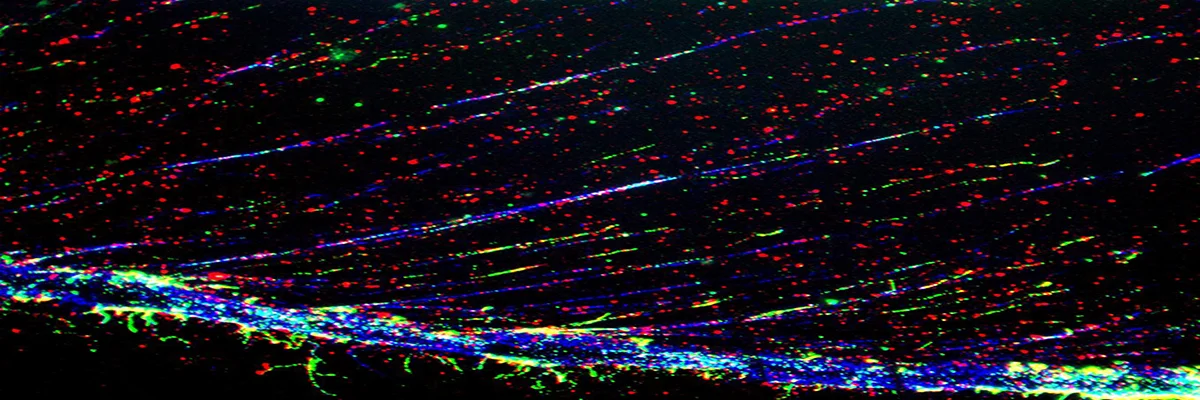Cell cycle derangement and metabolism: We have discovered that key cell cycle checkpoints have roles in metabolic reprogramming that affect cell-intrinsic signaling.
G1-S cell cycle inhibitors: p16 is a negative G1-S phase cell cycle regulator and tumor suppressor that inhibits cyclin-dependent kinases, impairing the hyperphosphorylation of retinoblastoma (RB1) and the E2F-mediated expression of proliferation-promoting genes. p16 is upregulated during cellular senescence, and its expression is lost in ~50% of all human cancers. We found that loss of p16 affects cell cycle progression and upregulates nucleotide biosynthesis through modulation of mTORC1 signaling. Our ongoing studies show that loss of p16 affects multiple metabolic pathways that are likely linked to cell cycle disruption.
DNA damage response checkpoints: Ataxia Telangiectasia Mutated (ATM) and Ataxia Telangiectasia And Rad3-Related Protein (ATR) are serine/threonine kinases that are critical cell cycle checkpoints after DNA damage. We published that inhibition of ATM allows for cells to bypass the cell cycle checkpoints during senescence induction through reprogramming of metabolism. Recently, we discovered that inhibition of ATM induces uptake of branched chain amino acids (BCAAs) via macropinocytosis, suggesting that cells without this checkpoint outcompete neighboring cells for critical nutrients. Our unpublished work demonstrates that upregulation of the ATR checkpoint affects oxidative phosphorylation and energy production via mTORC1 signaling.
Buj R, et al. Suppression of p16 increases nucleotide synthesis via mTORC1. Cell Reports. 2019 Aug 20; 28(8):1971-1980. *Featured in Trends in Biochemical Sciences
Buj R and Aird KM. p16: Cycling off the Beaten Path. Molecular & Cellular Oncology. 2019;6(6).
Buj R and Aird KM. dNTP Metabolism in Cancer and Metabolic Disease. dNTP Metabolism in Cancer and Metabolic Disease. Front Endocrinol (Lausanne). 2018 Apr 18;9:177.
Huang Z, Chen CW, et al. ATM inhibition drives metabolic adaptation via induction of macropinocytosis. Journal of Cell Biololgy. 2023 Jan 2;222(1):e202007026.
Chen CW, Buj R, Dahl ES, Leon KE, and Aird KM. ATM inhibition synergizes with fenofibrate in high grade serous ovarian cancer cells. Heliyon. 2020 Sep 29;6(9):e05097.
Dahl ES and Aird KM. Ataxia-Telangiectasia Mutated Modulation of Carbon Metabolism in Cancer. Frontiers in Oncology. 2017 Nov 29;7:291.
Aird KM, et al ATM couples replication stress and metabolism reprogramming during cellular senescence. Cell Reports. 2015 May;11(6):893-901.
Consequences of senescent cells on cell-extrinsic signaling and the microenvironment
Paracrine effects of senescent cells: The senescence-associated secretory phenotype (SASP) is known to have paracrine effects, both in aging and the tumor microenvironment. We have interrogated the epigenetic events modulating the SASP.
Paracrine effects of senescent metabolism: Little is understood about metabolites that are associated with the SASP and how these metabolites reprogram the microenvironment. We aim to identify and investigate SASP metabolites and their paracrine effects on neighboring cells and tissues.
Cell cycle dysregulation and compartmentalized metabolism effects on the microenvironment: We discovered that suppression of the G1-S phase inhibitor p16 alleviates a pro-inflammatory phenotype. Ongoing studies are aimed at exploring the metabolic changes underlying this observation.
Leon KE, et al. DOT1L modulates the senescence-associated secretory phenotype through epigenetic regulation of IL1A. J Cell Biol (2021) 220 (8): e202008101. *Highlighted here. #Chosen as one of the The Year in Cell Biology: 2021 by Journal of Cell Biology.
Aird KM, et al. HMGB2 orchestrates the chromatin landscape of senescence-associated secretory phenotype gene loci. J Cell Biol (2016) Nov 7;215(3):325-334. *Highlighted here
Leon KE, Tangudu NK, Aird KM, and Buj R. Loss of p16: A Bouncer of the Immunological Surveillance? Life (Basel) (2021) Apr 2;11(4):309.
Buj R, et al. Suppression of p16 alleviates the senescence-associated secretory phenotype. Aging (Albany NY) (2021), Feb 6;13(3):3290-3312.
Metabolism and cell fate decisions: Our studies demonstrate that metabolism plays a central role in the decision tree to enter or exit the cell cycle and that different metabolites and programs provide an extra layer of regulation as to whether cells will senesce or quiesce.
Metabolites as cues to proliferate: Cellular senescence is defined as a state of stable cell cycle arrest. While initially thought to be irreversible, we demonstrated that feeding fully senescent cells nucleotides reversed the cell cycle arrest. This was the first discovery that a metabolic cue can overcome this “irreversible” cell fate decision. Our ongoing studies are defining specific metabolic programs that sit at the fulcrum between senescence and proliferation.
Metabolism as inducers of senescence and quiescence: The metabolic state of cells has a direct effect on proliferation potential. We found that removal of dNTPs induces senescence. Our group also demonstrated that the metabolite alpha-ketoglutarate (aKG) is necessary for proliferation via inhibition of heterochromatin at E2F proliferation-promoting gene loci. Our recent work has identified metabolites that induce quiescence, and not senescence, suggesting that specific metabolic programs affect whether cells choose a short- or more long-term cell cycle arrest.
Dahl ES, et al. Targeting IDH1 as a pro-senescent therapy for high grade serous ovarian cancer. Mol Cancer Res. 2019 Aug;17(8):1710-1720. *Highlighted in the August 2019 issue #Press release from Penn State
Aird KM et al. Suppression of nucleotide metabolism underlies the establishment and maintenance of oncogene-induced senescence. Cell Reports. 2013 Apr 25;3(4):1252-65.
Fatkhudinov N, et al. Targeting ribonucleotide reductase M2 and mutant BRAF is a novel combinatorial strategy for melanoma. Mol Cancer Res. 2016 Sep;14(9):767-75.
Aird KM and Zhang R. Metabolic alterations accompanying oncogene-induced senescence. Molecular & Cellular Oncology, 2014;1(3).
Aird KM and Zhang R. Nucleotide Metabolism, Oncogene-Induced Senescence and Cancer. Cancer Letters. 2014 Jan 28;356(2 Pt A):204-10.

